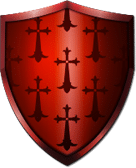A Student’s Guide to Constitutional Law
Constitutional law forms the basis for how the United States government is run. It’s written down in the Constitution, which became the law of the land on June 21, 1788. This document contains seven articles, which outline what the three branches of the federal government are and what they do, the balance of power between state governments and the federal government, and citizens’ rights and freedoms. The Constitution has also been amended to make changes and additions over time, starting with the Bill of Rights.
How the Constitution Was Created
After the American Revolution, a new governing document was adopted for the new country, called the Articles of Confederation. The Articles of Confederation called for a federal government that had very little power; most of the power was given to the states. When there were disagreements between the states, the government couldn’t really do anything about it. The federal government couldn’t even levy taxes, meaning that it had no money to pay an army to protect the nation. It soon became apparent that this just wasn’t going to work, not without some major changes. However, under the Articles of Confederation, any changes had to be agreed on by all 13 states, and getting all 13 to agree was pretty much impossible.
In May 1787, 55 delegates met to fix the Articles of Confederation, but they quickly realized that the problems were beyond fixing: The Articles of Confederation needed to be replaced entirely. They spent four months working on a new document, and the result was the Constitution. On June 21, 1788, the Constitution was ratified, making it the new governing document for the United States.
- The Constitution: How Did it Happen?
- The Constitution, the Articles, and Federalism
- Challenges of the Articles of Confederation
- The Articles of Confederation
- Weaknesses in the Articles of Confederation
- John Hanson, First President of the Original United States Government
- Ratification of the U.S. Constitution
Who Wrote the Constitution?
The group of men who wrote the Constitution are known today as the founding fathers. George Washington led the process, and the first draft was written by Virginia delegate Edmund Randolph. This document went through a series of revisions, many of them suggested by James Madison, later the nation’s fourth president. The man credited with actually writing down the final copy of the Constitution was Gouverneur Morris, a Pennsylvania delegate, who also created the preamble to the Constitution. Other significant contributors included Benjamin Franklin, Alexander Hamilton, Roger Sherman, and George Mason.
- Creating a Constitution
- Six Key Players at the Constitutional Convention
- Gouverneur Morris
- Historical Background of the Preamble to the Constitution
- Constitutional Convention and Ratification
- The Delegates to the Constitutional Convention
- Five Wild Ideas Rejected by the Constitutional Convention
Branches of the Federal Government
The new system of government was set up with three branches, each intended to balance the powers of the others so that citizens’ rights would be protected. These three branches are the executive, legislative, and judiciary branches. The executive branch includes the president and vice president, and it’s in charge of enforcing federal laws, negotiating treaties with other countries, and choosing federal judges. The legislative branch, consisting of the Senate and the House of Representatives, exists to make new laws. And the judiciary branch interprets laws and rules on whether or not they are constitutional.
- Our Government
- Three Branches of Government
- How Is Power Divided in the United States Government?
- Checks and Balances
- About Congress
- Branches of the U.S. Government
- Organizational Chart of the U.S. Government
- Separation of Powers in Action: U.S. v. Alvarez
Constitutional Amendments: The Bill of Rights and Beyond
In order to get the new government in place as soon as possible, the founding fathers agreed to immediately work on a set of amendments to the constitution that would include a variety of protections for citizens’ rights. James Madison wrote the first draft of these amendments, which would come to be known as the Bill of Rights. The Bill of Rights contained 12 amendments, but only ten were ratified to become part of the Constitution. These amendments include protections for people’s right to free speech, the right to protest, and the right for people accused of a crime to have their case decided by a jury of their fellow citizens. Since then, more than a dozen other amendments have been added to the Constitution, including measures protecting the right to vote regardless of a person’s race or sex.






